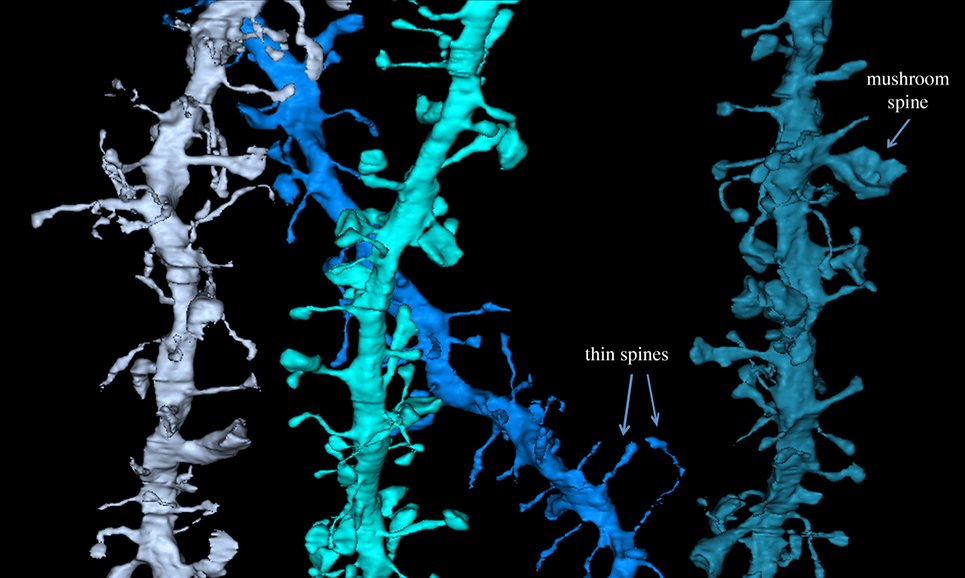Study: sleep is needed to help forget

Over the years, scientists have hypothesized why we sleep. Some people believe that this is a way to save energy, others that it provides an opportunity to “clear away cellular waste” from brain activity. There is a version that sleep simply makes animals lie still, allowing them to hide from predators. Recently, researchers presented evidence for another theory: we sleep to forget some of the information that we learn every day.
In order to learn and learn something new, numerous connections between neurons — synapses — must be established in the brain. These connections allow you to send and transmit signals to each other quickly and efficiently, and all the memories we have are stored in such networks.
')
In 2003, Giulio Tononi and Chiara Cirelli, biologists at the University of Wisconsin-Madison , suggested that synapses grow so rapidly during the day that the brain tries to cut these compounds down during sleep. In the future, scientists Tononi and Cirelli, along with other researchers, found a lot of circumstantial evidence that supported their hypothesis of synaptic homeostasis.
In the course of various experiments, scientists found that neurons can cut synapses, at least in laboratory conditions. With the help of various drugs, researchers have stimulated the growth of unnecessary synapses, which caused neuron bundles to independently cut down some processes.
As another proof of this theory, the electric waves that the brain emits are taken into account. During deep sleep, these waves diminish. Tononi and Cirelli then claimed that synaptic contractions lead to such changes.
Studies by Tononi and Cirelli have shown that even short periods of sleep or wakefulness alter synaptic activity at different levels, that is, cause synapses to shrink and grow, respectively. Their latest work demonstrates that the ubiquitous reduction of synapses occurs in the brain of mice when they sleep.
Since 2013, their colleague, Luisa de Vivo (Luisa de Vivo), conducted a painstaking study of the tissues taken from the mice at the time when some of them were asleep and others were awake. She used scanning electron microscopy to create three-dimensional high-definition images of 6920 synaptic connections in two different areas of the brain — a task that took more than four years to complete.

3D image of dendritic processes in mouse cortex
Researchers studied thousands of images to calculate the total surface area of contact between nerve endings and dendritic processes, tiny protrusions that serve as a receiver at synapses. They are interesting because they grow at the moment when the synaptic connections are strengthened. In the brain of sleeping mice, the contact surface area was 18% less than that of awake. In other words, there was a general decrease in the number of synaptic connections. The decline was non-uniform and was limited to small processes that were supposedly involved in training.
Another study was led by Graham Diering, a scientist at Johns Hopkins University . Dr. Diring and his colleagues tested the hypothesis of synaptic homeostasis by studying proteins in the mouse brain. In one experiment, they created a tiny hole through which one could look into the brain. Then they added a chemical that highlights the protein on the surface of the synapses.
As a result, the Diving team found that sleep is associated with a decrease in the size of the dendritic processes, as well as with a 20 percent reduction in the subunits of the AMPA receptor molecule, which disappeared from the reduced dendrites. When mice wake up, the Homer synaptic scaffold protein binds other receptors and their molecular “partners” together and holds them together in the synapses under the cell membrane. During sleep, an abbreviated version of this Homer1A protein enters the dendrites and disassembles the entire system and removes AMPA receptors, weakening the connection.
Scientists have also created genetically modified mice lacking the Homer1A gene. These animals slept in the same way as their littermates, but their synapses did not alter their proteins, as synapses did in normal mice. Dr. Diring's research suggests that drowsiness is caused by neurons that need to produce Homer1A and send it to synapses to trim them.
Scientists conducted a series of tests to see how these slices affect memory. They placed the mice in a room where they received a weak charge of electric current if they walked along one section of the floor. On the same night, a team of researchers injected a chemical that prevented neurons from cutting synapses into the brains of some mice.
The next day, the mice were returned back to the same chamber. Both groups of mice spent most of the time motionless, as they remembered that the movement would be followed by a shock. But when the researchers placed them in another cell, they saw a big difference. Those mice whose brain was not exposed to the drug at night sniffed the room with curiosity, while the mice with uncircumcised synapses froze again. Dr. Diring believes that the mice from the second group could not narrow down their memories to a specific camera, where they received a shock. Without night pruning, their memories were fuzzy.
Subsequent experiments by Tononi and his colleagues demonstrated that not every neuron performs the cut-off procedure — about one-fifth of the synapses remain intact. There is an assumption that these synapses encode "well-proven" memories that should not be changed.
Some scientists do not consider these results to be evidence of the hypothesis of synaptic homeostasis. It is difficult to say whether these changes in the brain are caused by sleep or biological clocks. In addition, it is impossible to unequivocally say that sleep exists only because the brain can cut synapses during this process.
Despite all the doubts, the new data may change the way how, for example, sleeping pills affect the human brain. At a time when they help people fall asleep, they can interfere with the process of cutting neurons, which is necessary for the formation of memories. In the future, drug molecules can be precisely oriented in such a way that the synapses are correctly trimmed.
Source: https://habr.com/ru/post/401375/
All Articles